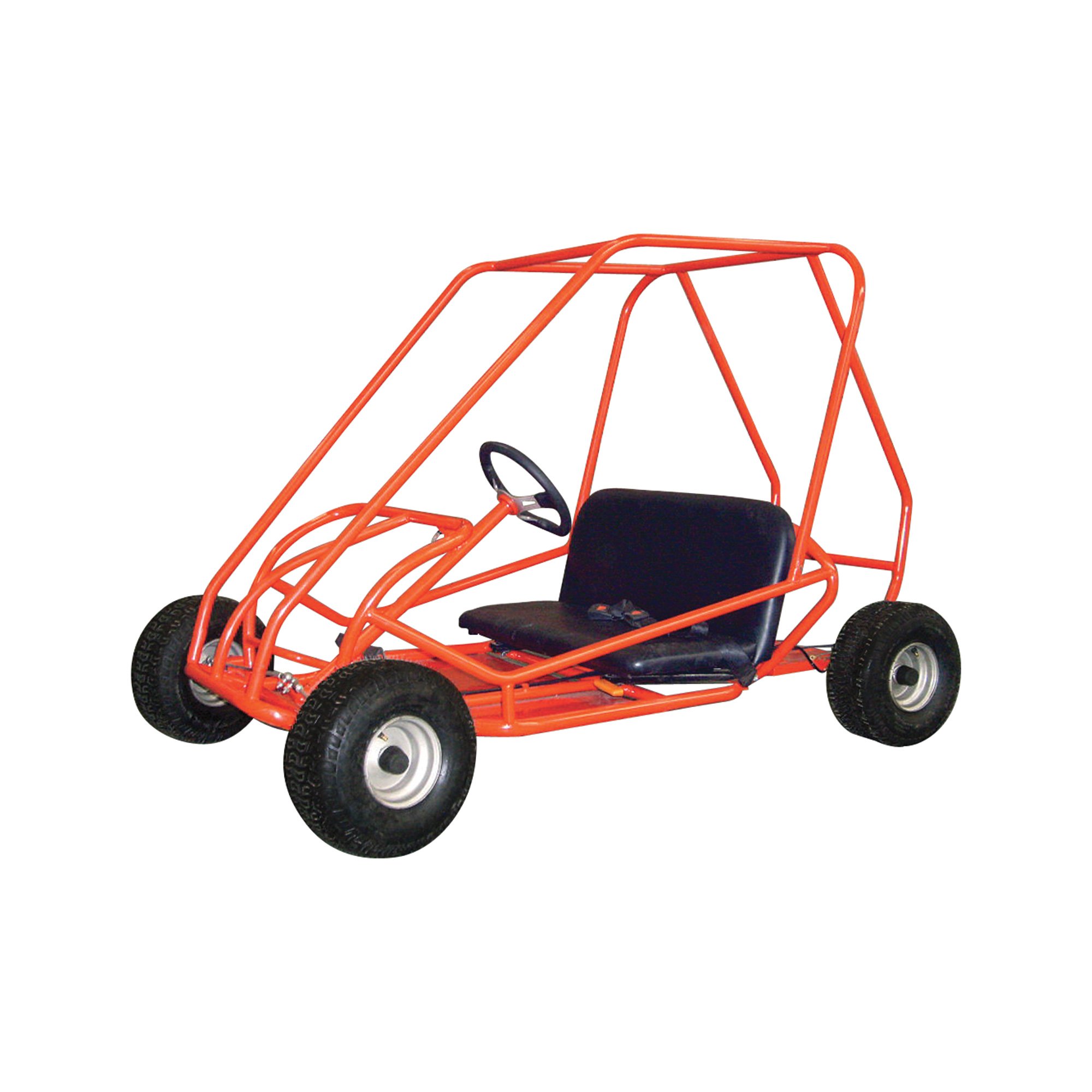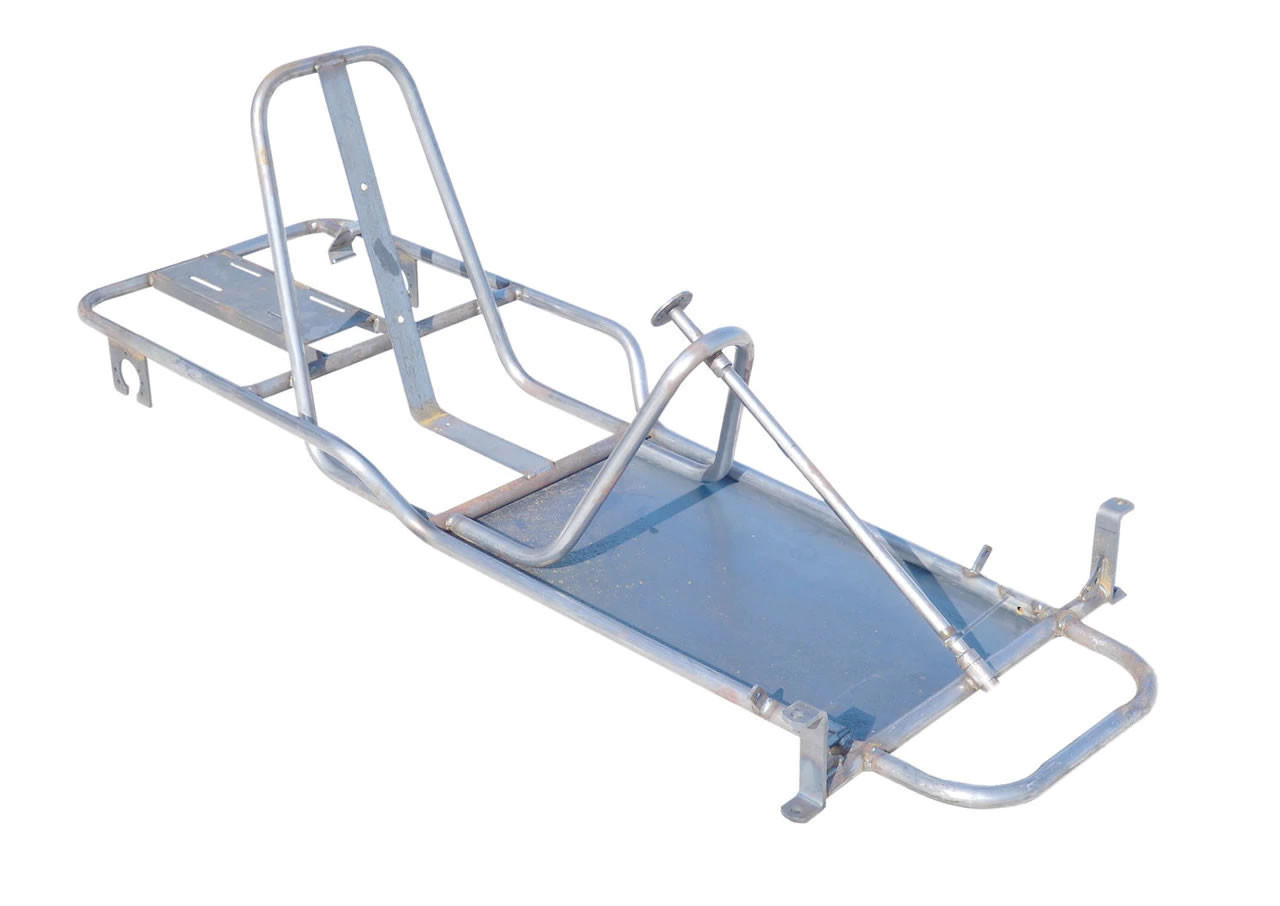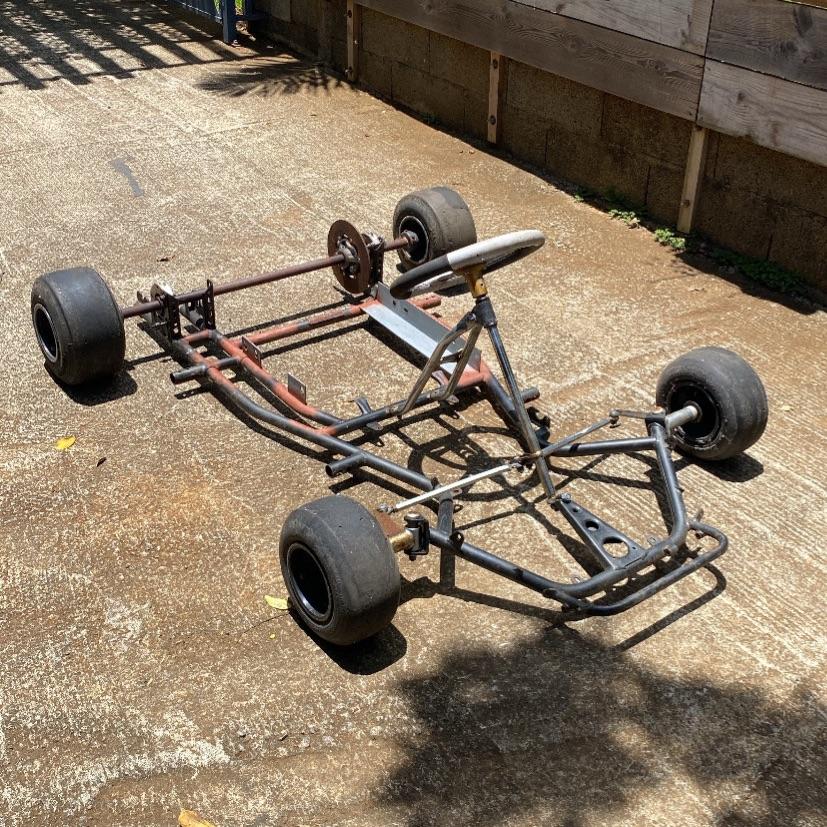The exhilarating world of go-karting has captivated adrenaline seekers for decades, offering an adrenaline-charged escape from the ordinary. At the heart of these miniature racing machines lies the go-kart frame, the backbone that provides strength, stability, and handling prowess. Whether you’re a seasoned racer or a curious novice, understanding the intricacies of go-kart frames is essential for a truly immersive and enjoyable experience.


A Glimpse into the World of Go-Kart Frames
A go-kart frame is the skeletal structure that forms the foundation of a go-kart, providing the chassis to which all other components are attached. It’s the backbone that bears the weight of the driver, engine, and other components while transmitting forces and ensuring optimal handling.
A Brief History of Go-Karts: From Humble Beginnings to Global Phenomenon
The origins of go-karting can be traced back to the post-World War II era in Southern California, where surplus aircraft parts were repurposed to create makeshift karts for recreational racing. These early karts were crude and rudimentary, but they laid the groundwork for the sophisticated machines we see today.
Components of a Go-Kart Frame: A Mechanical Symphony
A go-kart frame is comprised of several key components that work in harmony to deliver a thrilling driving experience:
-
Chassis: The main frame structure that forms the foundation of the go-kart.
-
Front axle: The assembly that supports the front wheels and steering system.
-
Rear axle: The assembly that supports the rear wheels and powertrain.
-
Suspension system: The mechanism that absorbs bumps and maintains tire contact with the ground.
-
Seating area: The cockpit where the driver sits and operates the go-kart.

Exploring the Diverse Realm of Go-Kart Frames
Go-kart frames come in various configurations, each tailored to specific needs and applications:
Recreational Go-Kart Frames: Casual Thrills for Everyday Adventures
Recreational go-kart frames are designed for leisurely enjoyment and casual racing. They typically prioritize comfort, stability, and ease of use, making them ideal for beginners and family fun.
Benefits of Recreational Frames:
- Easy to handle and control
- Comfortable and forgiving ride
- Durable and low-maintenance
Drawbacks of Recreational Frames:
- Not as performance-oriented as racing frames
- May not handle high speeds or sharp turns as well

Racing Go-Kart Frames: Precision and Performance for the Competitive Edge
Racing go-kart frames are engineered for maximum performance and agility, catering to seasoned racers and competitive enthusiasts. They prioritize responsiveness, handling, and cornering capabilities.
Benefits of Racing Frames:
- Exceptional handling and responsiveness
- Designed for high speeds and sharp turns
- Allow for fine-tuning and customization
Drawbacks of Racing Frames:
- More complex and demanding to operate
- May require more frequent maintenance
- Generally more expensive than recreational frames
Materials Used in Go-Kart Frame Construction: A Balance of Strength and Weight
The choice of material for a go-kart frame significantly impacts its weight, strength, and handling characteristics. Common materials include:
Steel:
-
Advantages: Strong, durable, and relatively inexpensive.
-
Disadvantages: Heavier than aluminum or carbon fiber.
Aluminum:
-
Advantages: Lightweight, strong, and corrosion-resistant.
-
Disadvantages: More expensive than steel.
Carbon Fiber:
-
Advantages: Extremely lightweight and rigid, offering exceptional performance.
-
Disadvantages: Most expensive material option.

Design Considerations for Go-Kart Frames: Engineering for Thrills
The design of a go-kart frame plays a crucial role in determining its handling, performance, and overall driving experience. Key design considerations include:
Chassis Design:
-
Single-tube chassis: Simple and lightweight, but less rigid than other designs.
-
Double-tube chassis: More rigid and stable than single-tube designs.
-
Space frame chassis: Extremely rigid and lightweight, often used in high-performance karts.
Suspension Systems:
-
Independent suspension: Allows each wheel to move independently, providing better handling and traction.
-
Live axle suspension: Less sophisticated than independent suspension, but simpler and more durable.
Seating and Ergonomics:
-
Seat design and positioning: Ensure proper driver comfort and support.
-
Footrest and pedal placement: Optimize ergonomics for fatigue-free driving.
-
Steering wheel and driver comfort: Create a comfortable and intuitive driving position.
-
Maintaining structural integrity: All modifications should preserve the frame’s strength and rigidity.
-
Ensuring proper suspension function: Modifications shouldn’t compromise suspension performance.
-
Using high-quality components: Opt for reliable and durable parts to ensure safety.
Manufacturing Processes for Go-Kart Frames: From Concept to Creation
Go-kart frames are manufactured using a variety of techniques, each offering distinct advantages and applications:
Traditional Welding Techniques: A Time-Tested Approach
-
Gas metal arc welding (GMAW): A popular method that utilizes a continuously fed electrode and shielding gas to create strong and precise welds.
-
Shielded metal arc welding (SMAW): Also known as stick welding, this method employs a consumable electrode coated in flux to protect the weld pool.
-
Flux-cored arc welding (FCAW): Similar to GMAW, but the electrode core contains additional materials that improve weld properties and reduce the need for separate shielding gas.
Advanced Manufacturing Techniques: Pushing the Boundaries
-
Laser cutting: Utilizes a highly focused laser beam to precisely cut intricate shapes from metal sheets, ensuring clean edges and minimal material waste.
-
Computer numerical control (CNC) machining: Employs computer-controlled machines to create precise and repeatable cuts and shapes on metal components.
-
3D printing: An emerging technology that allows for the creation of complex frame structures layer by layer, offering design flexibility and potential weight savings.
Selecting the Right Go-Kart Frame for Your Needs: Finding the Perfect Fit
Choosing the right go-kart frame hinges on several factors, ensuring an optimal experience that aligns with your goals and skill level:
Factors to Consider When Choosing a Go-Kart Frame:
-
Intended use (recreational or racing): Recreational frames prioritize ease of use, while racing frames prioritize performance.
-
Driver’s experience level and skillset: Beginners may benefit from simpler frames, while experienced drivers can handle more complex designs.
-
Budget: Recreational frames are generally more affordable than racing frames.
Recommendations for Different Types of Users:
-
Beginners and casual riders: Select a recreational frame with user-friendly features and a comfortable ride.
-
Experienced racers and enthusiasts: Consider a high-performance racing frame that allows for customization and fine-tuning.
-
Children and young drivers: Choose a frame designed for smaller statures and prioritize safety features.
Customizing and Modifying Go-Kart Frames: Tailoring the Ride
For experienced enthusiasts, customization offers the opportunity to personalize their go-kart’s performance and handling characteristics. Common modifications include:
-
Chassis adjustments: Altering wheelbase or caster angle to fine-tune handling.
-
Suspension upgrades: Replacing components with high-performance parts for improved traction and control.
-
Performance enhancements: Adding aerodynamic elements or upgrading the engine for increased speed.
Safety Considerations When Modifying Go-Kart Frames:
-
-
-
Pre-use inspection and maintenance:
- Inspecting the frame for cracks or damage
- Checking all fasteners and welds
- Ensuring proper tire pressure and alignment
Safe operating practices:
- Wearing appropriate safety gear, including helmet, gloves, and proper attire
- Operating the go-kart in a safe and controlled manner
- Being aware of surroundings and other drivers on the track